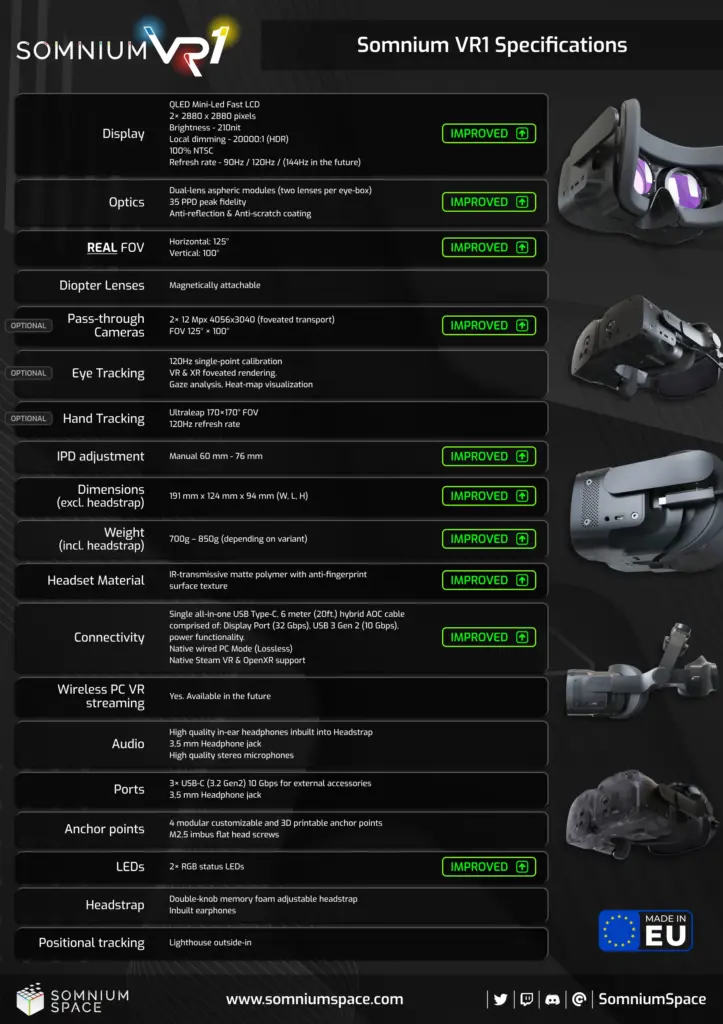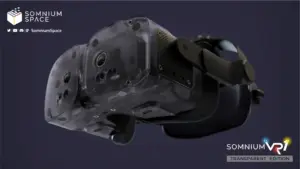Somnium Space has introduced substantial changes to the VR1 headset, aiming for improvements in structural integrity, optics, comfort, weight, and customization options. The main focus is a significant upgrade in the display component, alongside other enhancements.

Display Specifications
The VR1 headset now features a display resolution of 2880 x 2880 pixels per eye, a noticeable upgrade compared to many other headsets in the market. Coupled with a pixel density of 35 pixels per degree (PPD), the VR1 aims to deliver high-quality graphics. The screen brightness has also been improved, now boasting 210 nits. Combined with a high contrast ratio of 20,000:1 achieved through Local Dimming, the headset should offer vibrant, rich, and detailed images. The VR1 covers 100% of the NTSC color gamut, and refresh rates range from 90Hz to 120Hz, with a 144Hz mode currently being tested.
| Specification | Details |
|---|---|
| Resolution per eye | 2880 x 2880 pixels |
| Pixel Density | 35 PPD |
| Brightness | 210 nits |
| Contrast Ratio | 20,000:1 |
| Color Gamut | 100% NTSC |
| Refresh Rate | 90-120Hz (144Hz in testing) |
Pass-Through and Eye Tracking
The pass-through camera system on the VR1 has been upgraded to include two 12 Mpx cameras with a native resolution of 2x 4056×3040. An optional external LiDAR sensor has also been introduced, widening the scope of potential applications with the pass-through technology, such as accurate 3D mapping of the user’s environment.
The VR1’s eye-tracking capabilities have seen an upgrade. Developed in collaboration with the Czech Academy of Sciences, the headset uses IR-reflective glass inserts for its lenses, enhancing the precision of eye-tracking cameras. The headset measures eye position and movement, potentially leading to reduced GPU load or higher quality graphic experiences through foveated rendering.

